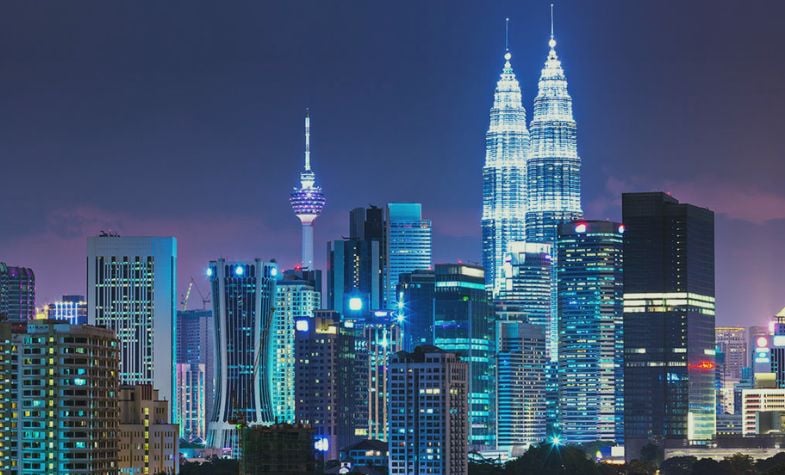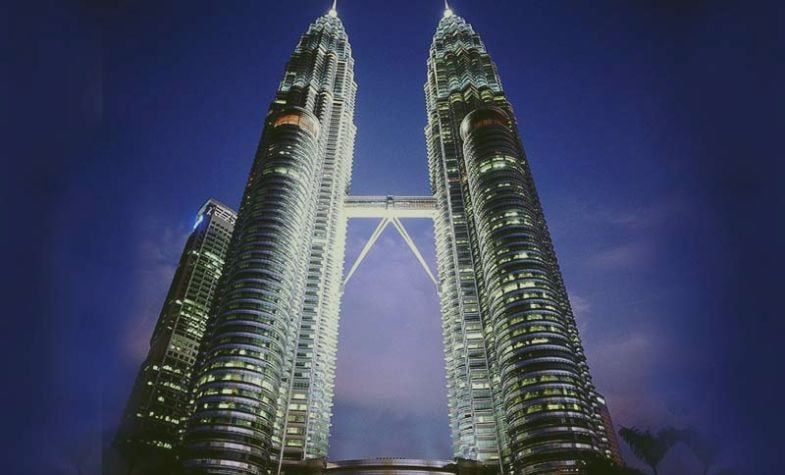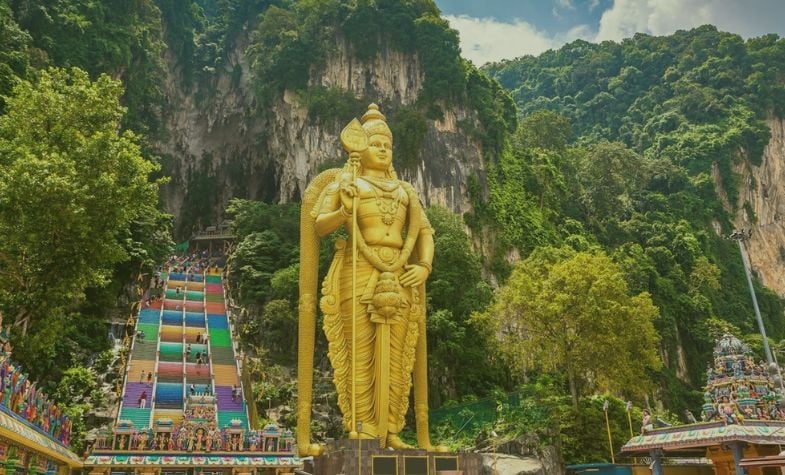Kuala Lumpur: A comprehensive guide to Malaysias vibrant capital
Welcome to Kuala Lumpur, the bustling capital of Malaysia! Known for its dynamic blend of modernity and tradition, Kuala Lumpur stands as the country’s largest city and a pivotal cultural and commercial hub. From its towering skyscrapers to its rich history, this city has something for everyone. Let’s dive into what makes Kuala Lumpur truly special.
Historical background

Early origins
Kuala Lumpur, meaning “muddy estuary” in Malay, began as a tin-mining settlement in 1857. Founded by a group of Chinese miners in the Ampang area, the city’s strategic location at the confluence of the Kelang and Gombak rivers quickly turned it into a thriving tin-collection center.
British colonial influence
The city’s growth accelerated under British rule in the late 19th century. Sir Frank Swettenham, a British resident, played a crucial role in its development by initiating infrastructure projects like the Klang-Kuala Lumpur Railway and encouraging fire-resistant construction methods. By 1880, Kuala Lumpur had surpassed Klang as the state capital, and its central location made it a natural choice as the capital of the Federated Malay States in 1895.
Post-Independence developments
After World War II and the Japanese occupation, Kuala Lumpur continued to grow rapidly. It became the capital of the Federation of Malaya in 1957 and Malaysia in 1963. Despite facing challenges like population congestion, the city’s growth has been remarkable, with modern infrastructure and administrative functions shifting to the nearby Putrajaya in the early 2000s.
Geographical setting
Location and climate
Nestled in west-central Peninsular Malaysia, Kuala Lumpur is situated about 25 miles east of Port Kelang, on the Strait of Malacca. The city is surrounded by hilly terrain and is characterized by its equatorial climate, featuring high temperatures and humidity year-round. Rainfall is abundant, with about 95 inches annually, peaking during the monsoon seasons.
Natural features
The city’s landscape is a mix of natural and man-made wonders. The nearby Main Range and lush greenery provide a scenic backdrop to Kuala Lumpur’s urban sprawl.
Modern Kuala Lumpur
Economic and industrial growth
Kuala Lumpur is Malaysia’s economic powerhouse, with a thriving industrial sector and a focus on high technology and finance. The city’s industrial suburbs, like Sungai Besi, are home to factories and engineering works, while Petaling Jaya and Batu Tiga are key areas for technological advancements.
Transportation and infrastructure
The city’s transportation network includes an extensive road system, a monorail, and light rail transit. Kuala Lumpur International Airport, located in Sepang, connects the city globally, making travel convenient for both locals and visitors.
Notable landmarks
Petronas Twin Towers

The Petronas Twin Towers, completed in 1998, were once the tallest buildings in the world. Designed by architect Cesar Pelli, these towers stand at 1,483 feet and feature a skybridge linking the two structures. They symbolize Malaysia’s economic progress and architectural innovation.
Kuala Lumpur tower
Standing at 1,381 feet, the Kuala Lumpur Tower is a major telecommunications and observation tower. It offers panoramic views of the city and is an essential part of Kuala Lumpur’s skyline.
Sultan Abdul Samad building
This historic building, influenced by Moorish architecture, was once the administrative center of British Malaya. Today, it remains a significant cultural and architectural landmark.
Religious and cultural sites
National mosque (Masjid Negara)
Masjid Negara, with its striking architecture and large capacity, is a prominent symbol of Islam in Malaysia. It serves as a key religious site and a tourist attraction.
Thean Hou Temple
Thean Hou Temple is a prominent Chinese temple in Kuala Lumpur, dedicated to Thean Hou, the goddess of the sea and protector of fishermen. Located on a hill overlooking the city, the temple is renowned for its stunning architecture and intricate design. Its three-tiered structure features vibrant red and gold colors, ornate carvings, and beautiful dragon motifs..
Batu Caves

Batu Caves near Kuala Lumpur are famous for their Hindu temples set within limestone caves. The site features a towering statue of Lord Murugan and is a major pilgrimage destination. The Thaipusam festival, held annually, sees thousands of devotees climbing the 272 steps to the main cave temple, creating a vibrant and bustling atmosphere.
Shopping and entertainment
Golden triangle
The Golden Triangle is Kuala Lumpur’s bustling commercial hub, renowned for its upscale shopping malls, luxury hotels, and vibrant nightlife. This dynamic area is a central attraction for both shopping enthusiasts and those seeking entertainment.
Popular shopping malls
Kuala Lumpur boasts diverse shopping experiences, from the high-end Suria KLCC, located at the base of the iconic Petronas Twin Towers, to the upscale Pavilion Kuala Lumpur in the Bukit Bintang area. These shopping destinations cater to all tastes and budgets, offering everything from luxury brands to affordable fashion, making the city a vibrant retail paradise.
Night markets
Kuala Lumpur’s night markets, such as Jalan Alor, provide a lively atmosphere where visitors can savor local street food and enjoy vibrant shopping. These markets offer a diverse array of delicious dishes and unique goods, capturing the city’s energetic spirit and culinary culture.
Cuisine and dining
Kuala Lumpur’s culinary scene is a melting pot of flavors. Traditional Malay dishes like nasi lemak and international cuisine make the city a food lover’s paradise.
Transportation options
Monorail and light rail
Kuala Lumpur's efficient public transport includes the Kuala Lumpur Monorail and Light Rail Transit (LRT) systems. The monorail, running 8.6 kilometers (5.3 miles), connects key areas like Bukit Bintang, while the LRT, with the Kelana Jaya and Klang Valley lines, covers over 100 kilometers (62 miles), linking suburban areas to the city center. Both systems ease traffic congestion and offer a reliable way to navigate the city.
Kuala Lumpur International Airport
Kuala Lumpur International Airport (KLIA), located 50 kilometers (31 miles) south of the city, is Malaysia's major international hub. Opened in 1998, KLIA features two terminals and connects travelers globally. It offers quick access to Kuala Lumpur via the KLIA Ekspres and KLIA Transit trains, which reach the city center in about 30 minutes.
Kuala Lumpur is a city of contrasts—where modern skyscrapers meet traditional architecture, and bustling markets coexist with tranquil parks. Its rich history, cultural diversity, and economic vitality make it a fascinating destination. Whether you’re exploring its landmarks, indulging in its cuisine, or simply soaking in its vibrant atmosphere, Kuala Lumpur offers a unique experience that captures the essence of Malaysia.
***
Travel Authentic Asia Company is your best choice for discovering the beauty of Southeast Asia. Our experienced and knowledgeable travel advisors are committed to helping you create a tailor-made tour and extraordinary experiences in this majestic region.
If you're looking for an authentic cultural experience, do not hesitate to contact Travel Authentic Asia to choose a Vietnam tour, Southeast Asia tour package or to customize your own style tour to South East Asia.

